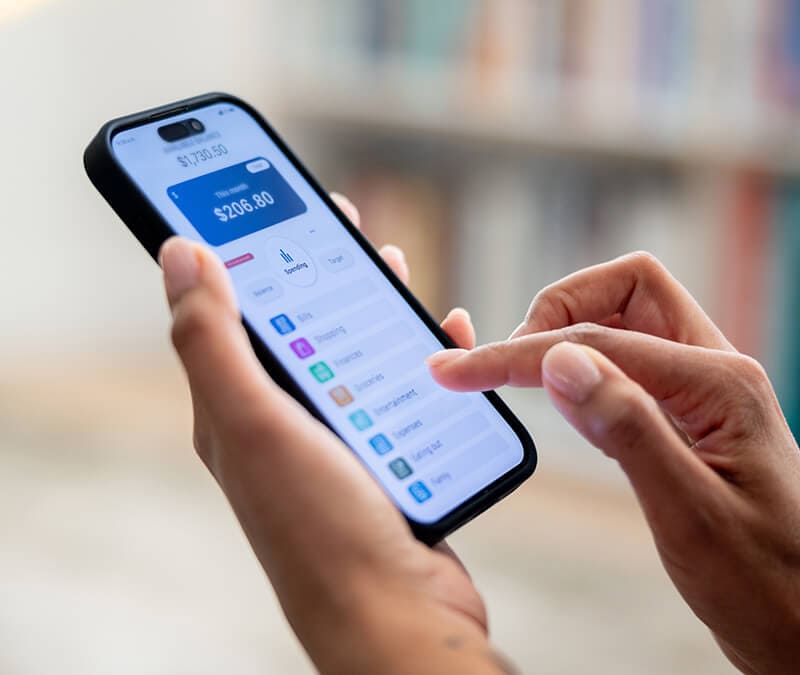10 Tips to help hack-proof your dorm room
College campuses are one of the best places for scammers and cybercriminals to target students. Take these steps to help hack-proof your personal space.

How’s college? Still settling in your dorm? Reconnecting with friends and starting new classes can be a lot of fun. However, you may get more than what you bargained for.
There’s a chance cybercriminals are looking for their next target—eager to run up charges on their credit cards, access their bank accounts, and snoop on their personal information and steal their identity. Fortunately, you can take several steps to help protect you from their attacks and hack-proof your dorm room. It requires a bit of planning and tech knowledge.
Here are 10 tips for boosting your online safety as the school year resumes.
1. Watch out for phishing scams.
Phishing scams are more advanced than ever, with cybercriminals now using AI to make fake emails and texts look incredibly convincing. You might get a message that seems like it’s from your bank, credit card provider, or even your university, asking you to click on a link or provide personal information. But don’t be fooled—these scams are designed to steal your login credentials, Social Security number, and more.
What to do:
Always double-check the URL before clicking on any links. Legitimate institutions won’t ask for sensitive information over email or text. If you’re unsure, contact your bank or university directly using their official phone numbers or websites. Also, consider using AI against them with Norton Genie, our free AI-powered scam detector.
2. Be cautious of public Wi-Fi.
We all love the convenience of free Wi-Fi at the student union or coffee shop. Unfortunately, public Wi-Fi networks can be a scammer’s playground. Cybercriminals can easily spy on your online activity, including the websites you visit and the passwords you type.
What to do:
Avoid accessing sensitive accounts, like your bank or credit card portals, when using public Wi-Fi. Help protect yourself connecting through a robust VPN, like Norton VPN, which encrypts your data. Alternatively, use your mobile data or 5G network for any important transactions.
3. Monitor your bank and credit card accounts constantly.
It’s easier to stop hackers if you catch them in the act. By checking your bank and credit card statements at least a couple of times a week, you can quickly spot any suspicious activity, like purchases you didn’t make.
What to do:
Many banks now offer fraud detection tools that alert you to any unusual transactions. Sign up for these alerts, and if you notice any unauthorized charges, contact your bank or credit card company immediately.
4. Use credit cards instead of debit cards whenever you can.
Paying for your late-night pizza or online purchases? Always try to use your credit card over your debit card. Why? If someone gets their hands on your credit card number, you can dispute the charges, and the money isn’t taken directly from your account. But if they access your debit card, they could drain your bank account, and it’s much harder to get that money back.
What to do:
For even better security, consider using virtual credit card numbers for online purchases. These are single-use numbers that protect your actual credit card information.
5. Keep track of your devices.
In the hustle of college life, it can be easier than one might think to misplace your phone, laptop, or tablet. But losing these devices can be a disaster, not only because they’re expensive to replace, but they also contain tons of personal data—from your emails to your bank logins.
What to do:
Always keep an eye on your devices and enable password protection or biometric security, like fingerprint or face ID. You can also use tracking software, such as Find My on Apple devices or Find My Device on Android, to locate a lost device quickly.
6. Create unique, complex passwords … for absolutely everything.
We know, we know … easier said than done. We all know strong passwords are key to staying safe online, but it can be tough to remember different passwords for every site. That’s where password managers come in—they generate and store complex passwords for you, so you don’t have to worry about remembering them all.
What to do:
Use a trusted password manager to create unique passwords for every account. And when you do create a password, make sure it’s a combination of letters, numbers, and symbols. Avoid using the same password across multiple sites.
7. Enable two-factor authentication for everything you can.
Two-factor authentication (2FA) adds an extra layer of security to your online accounts by requiring two pieces of information before granting access. For example, you might enter your password and then receive a text message with a code to verify it’s really you.
What to do:
Enable 2FA for any account that offers it, especially sensitive ones like your bank, email, or social media accounts. If you want to go even further, consider using hardware security keys where available, which offer a more secure alternative to SMS codes.
8. Be smart with shared computers.
If you’re using a computer at your school’s library or computer lab, be extra cautious. Public computers may not have the same security measures as your personal devices, and they could be vulnerable to malicious hacking.
What to do:
Avoid logging into your bank or other sensitive accounts on public computers. If you must use them, always log out of every site before walking away. Clear your browsing history and cookies as well to make sure no one else can access your information.
9. Don’t overshare on social media.
You don’t want cybercriminals to know where you are all the time. Oversharing can make you an easy target. Posting about your weekend plans or sharing your dorm location could give thieves the information they need to strike while you’re away.
What to do:
Avoid sharing too much personal information online. If you want to post about your awesome weekend, wait until you’re back in your dorm. And review your privacy settings to make sure only trusted friends can see your posts.
10. Secure your smart devices.
More students are bringing smart speakers, lights, and other IoT (Internet of Things) devices into their dorms. While these devices are super convenient, they can also be easy targets for bad actors if they’re not properly secured.
What to do:
Change the default passwords on all your IoT devices, and make sure their firmware is up to date. Turn off features you don’t use, like remote access, and consider using a separate network for your smart devices to keep them isolated from your other gadgets.
Precautions can make a world of difference.
College should be a time to enjoy life and learning. And, you already have enough on your plate, studying for exams and doing assignments. So, take these steps to help protect you from any cybercriminals targeting students and keep your peace of mind. Stay safe!
Editorial note: Our articles provide educational information for you. Our offerings may not cover or protect against every type of crime, fraud, or threat we write about. Our goal is to increase awareness about Cyber Safety. Please review complete Terms during enrollment or setup. Remember that no one can prevent all identity theft or cybercrime, and that LifeLock does not monitor all transactions at all businesses. The Norton and LifeLock brands are part of Gen Digital Inc.




Want more?
Follow us for all the latest news, tips, and updates.